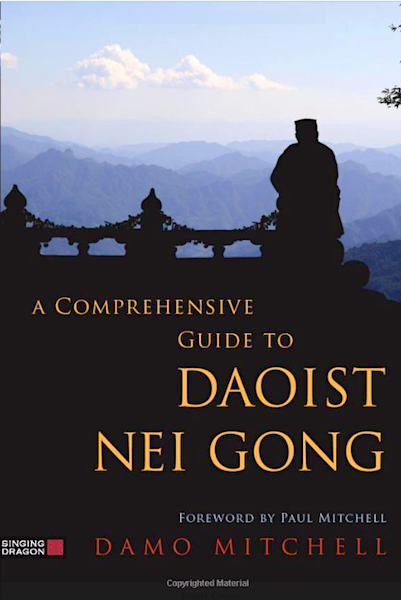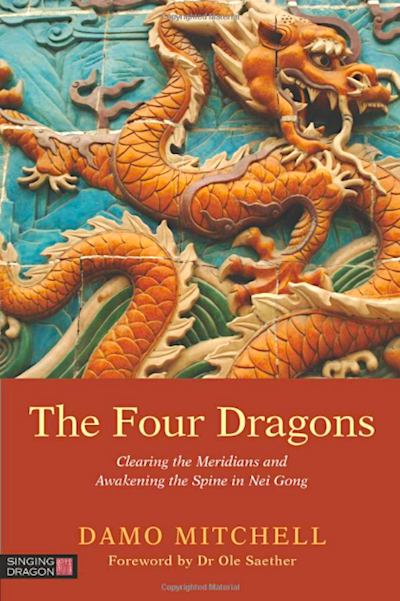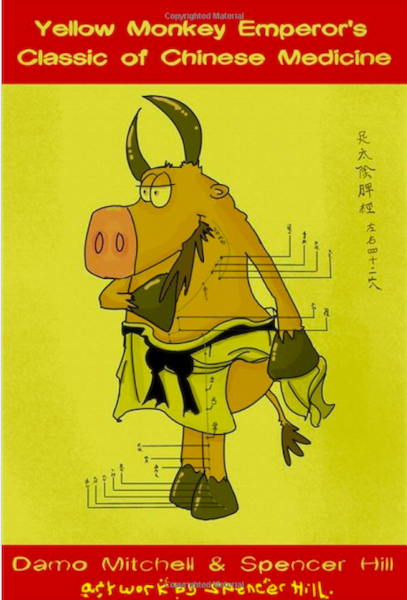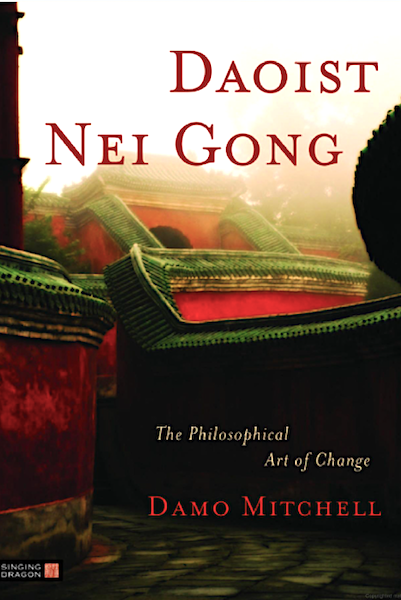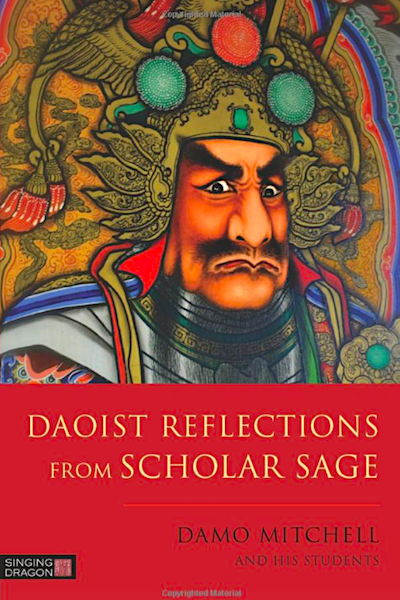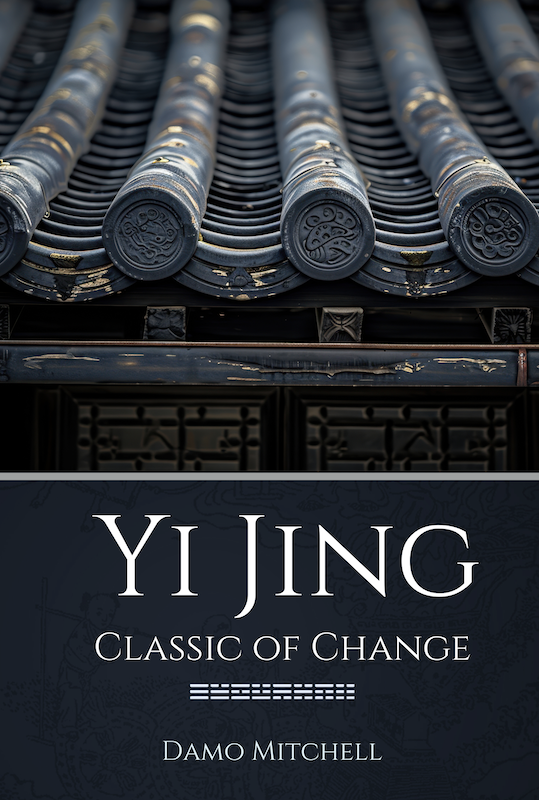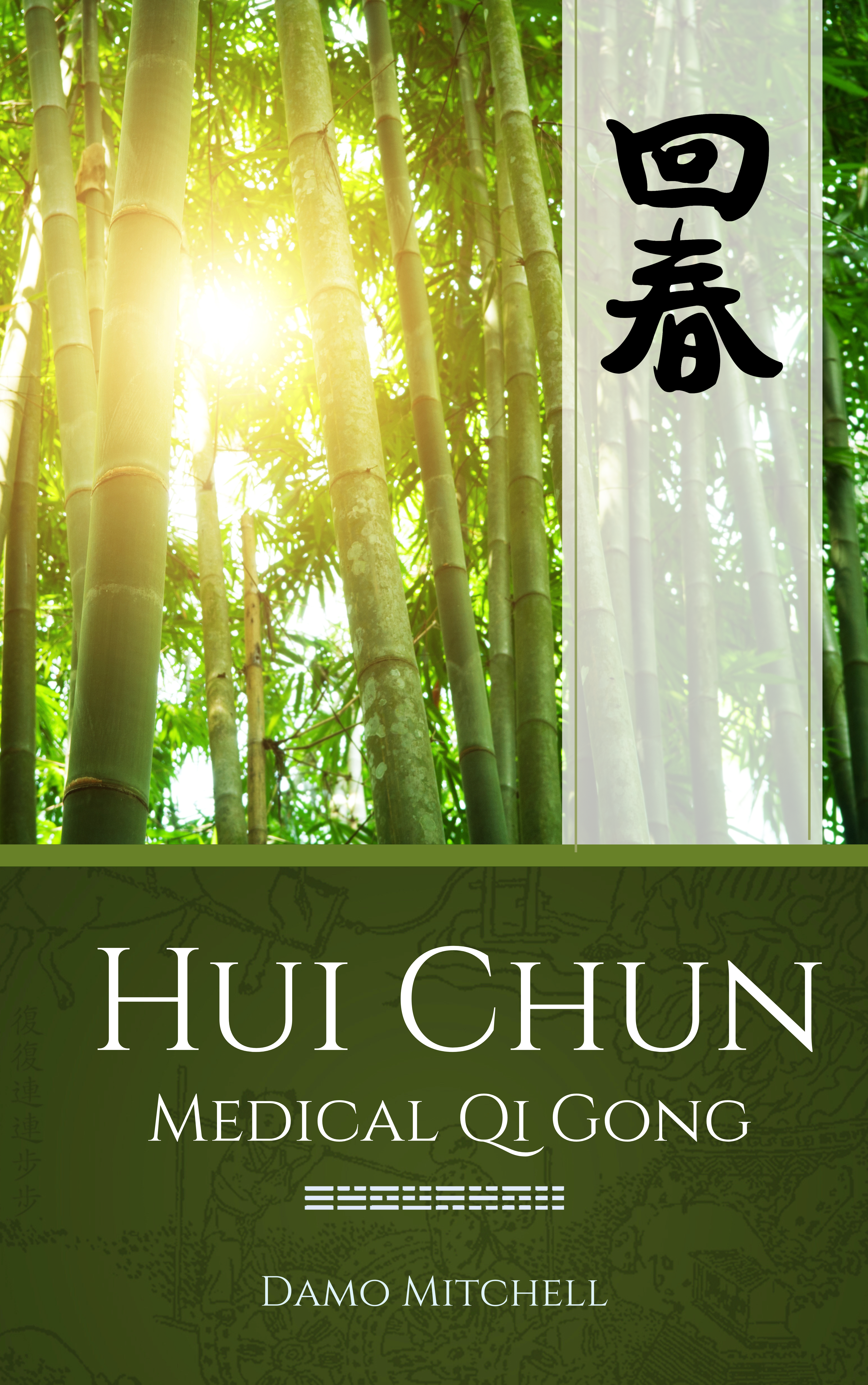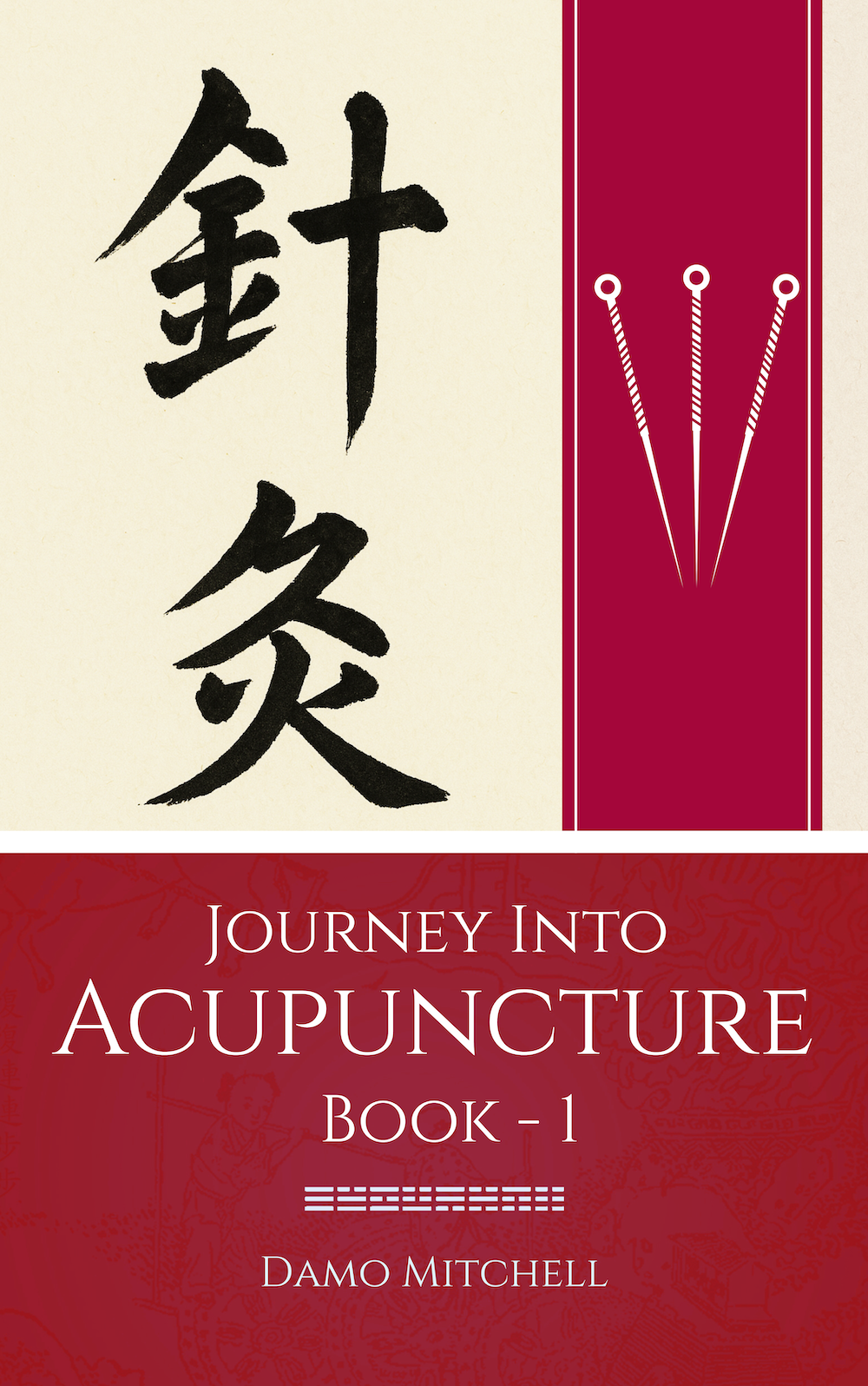Books by Damo
“Listed below are all of the titles by Damo Mitchell that are currently available. Each of these books has received rave reviews and a number of these titles are acclaimed as the best in their field.“
A Comprehensive Guide to
Daoist Nei Gong
A Comprehensive Guide to Daoist Nei Gong is the main text book of the Lotus Nei Gong school. It includes an overview of the process involved in our training. It looks at the Dan Tian, the nature of Qi and the variuous exercises involved in authentic Daoist alchemical work.
– A comprehensive description and step-by-step explanation of the Nei Gong internal alchemical process also explaining its philosophical basis. Essential reading for practitioners of Nei Gong, Qi Gong, martial arts and Chinese medicine. –
“I urge anyone interested in the internal arts to read this book. You won’t get standard regurgitated descriptions of Qi or Qi gong. Nor will you get exotic tales of secret rituals in dark caverns. What you will get is a truly comprehensive sharing of profound information in an accessible format. Damo has not only dedicated his life to cultivating ‘gong’ but also to understanding the processes involved (somatically and intellectually) so that others can benefit.” — Dr Cindy Engel, Associate Lecturer, The Open University, U.K
White Moon on the
Mountain Peak
Drawing together a huge amount of esoteric material on the hidden aspects of Daoist practice, Damo presents theory and practice coherently for western practitioners. He offers his own experiences of each stage of attainment, describing the tangible results that should appear, and provides guidance on the practicalities and potential pitfalls of alchemical training.
“I have been devotedly practicing and researching the esoteric methods of Buddhism and Daoism since I was a teenager. In my travels and research I have been blessed to have received authentic teachings in the internal martial arts and the meditation methods of Buddhism. In strong contrast to this, despite my efforts I have never been able to access the authentic teachings of the Nei Dan firing process. What was available was shrouded in symbolic language and secrecy. That all changed when I met Damo Mitchell. Not only is Damo’s transmission authentic but his teachings are clear and practical. The teachings given in this book are a true gift for the English speaking Daoist community.” — Adam Mizner, Founder of Heaven Man Earth Taiji International
Daoist Nei Gong
For Women
Although the energetic anatomy of men and women is different, the ancient teachings of Nu Dan, a separate branch of internal alchemy for women, have been lost in the literature over the centuries and only survive through practice in the lineages. This book takes a detailed look at female energetic anatomy, exploring how it is different from its male counterpart, and explains and describes the specific practices which support the unique strengths and challenges that the female energy system presents. Previously wrapped in secrecy, the teachings in this book include qigong exercises that activate the energy of the uterus and an explanation of how menstruation and a connection to the cycles of the moon can be converted into a tool for Nei Gong development.
“I knew I had found a rare treasure for my instructors and students when I read Roni and Damo’s Daoist Nei Gong for Women. Thorough, deep and wise, this is a voluminous “must-have” on any serious Qigong/ Neigong practitioner’s shelf. It is sure to answer all questions women will have on these ancient health and empowerment practices, as up until now, so few knowledgeable books have been written about them. Women practitioners will now have a deep well to draw from, gleaning wisdom from two of the finest teachers of Neigong in the modern world.” — Daisy Lee, Founder, Radiant Lotus Women’s Qigong
Meridian Theory in Nei Gong
Heavenly Streams
The art of connecting with, feeling and adjusting the energy body using the consciousness is a key aspect of Nei Gong and Qi Gong. It sits somewhere between Qi Gong, meditation and the lesser-known art of Shen Gong, and although it is known in China it has never before been written about in an accessible way in the West. Damo Mitchell provides step-by-step instructions on how to experience the various elements which make up the energy body, explaining how to identify and feel these, and how to diagnose imbalances and restore harmony. He describes the nature of the five elements, the meridians and the meridian points, inviting the reader to experience them through guided internal exercises using the body, breath and mind. Instructional drawings and photographs are included throughout the book. Connecting the fundamentals of Chinese medicine with the lesser-known spiritual and esoteric aspects of practice.
“This book should be studied by students and practitioners of Chinese internal martial arts, Chinese medicine, and all others using Meridians in their practices… This is one of the few books that gives a Qigong practice which allows you to feel or sense your own Meridians and Acupoints. It also teaches you how to inject Qi into Acupoints.” — Marty Eisen, PhD, Yang Sheng Magazine
Awakening the Spine in Nei Gong
The Four Dragons
Within the context of a larger discussion of Dao Yin, Damo Mitchell teaches and explains the Dragon Dao Yin exercises, a set of four short sequences designed to work with the subtle energies of the spine and lead pathogenic energies out of the body.
More ‘Yang’ in nature than Qi Gong, Dao Yin focuses on outwards movements and strong internal cleansing. The book highlights this important distinction and covers the theory, history and development of Dao Yin exercises, as well as the relationship between Chinese medical theory and Dao Yin training. One chapter is devoted to problems related to stagnation and the flow of Qi, and explains the different causes and forms of stagnation. Later chapters look at breathing patterns and the extension of Yi, opening the joints, and rotating the bones and spine. Damo Mitchell also discusses stillness as the source of movement, the philosophical significance of the Dragon and the pearl, and the means of hardwiring Dao Yin exercises into the energetic body. Central to the discussion is the concept of the spine, and how to wake it up.
For the first time in the English language, the Dragon exercises – Awakening, Swimming, Soaring and Drunken – are described in detail, with photographs and step-by-step instructions on each of the exercises as individual therapeutic exercises and as a form.
Yellow Monkey Emperor’s
Classic of Chinese Medicine
A horse complains of a chest as tight as a bear’s embrace, a goat bleats about skin as dry as parchment, and a rat describes his urine as darker than soya sauce. Join these lively characters and their friends as they seek diagnosis from wise animal sages and the yellow monkey emperor.
Covering 78 syndromes of Chinese medicine, these cartoons graphically illustrate the disturbances and illnesses that can affect the organs of the body, or Zang Fu, as they are understood in Chinese medicine. They are accompanied by a concise list of symptoms for easy diagnostic reference. Combining Damo Mitchell’s deep knowledge and experience with Spencer Hill’s witty cartoons, this is a fun way to learn, remember and be entertained by the syndromes and their symptoms.
“It’s a fabulous text book. If you’re a student who learns through visual cues, this is the Chinese Medicine book for you. The graphic novel, comic strip style, travel story is punctuated by diagrams summarizing the main symptoms of each problem, so it’s easy to navigate through the book… More text books should be put together like this. Perhaps this approach to learning would be exactly the way to engage visual learners in all sorts of subjects.” — Rachel Morris, The Association of Illustrators
The Philosophical Art of Change
Daoist Nei Gong
Nei Gong has been a well-kept secret within the Daoist sects of China for centuries. Based upon the original teachings of the great sage Laozi, it has only ever been taught to close students of the masters chosen as the heads of the ancient orders.
This book provides a breakdown of the entire Nei Gong process, and explains in plain English the philosophy which underpins Nei Gong practice, and which is based on the original teachings of the ancient Daoist priests. The methodology of Sung breathing, an advanced meditative practice which has until now been reserved for ‘inner-door’ students is described, and the book contains an entire set of Qigong exercises accompanied by instructional photographs and drawings.
This book will be of interest to all practitioners of Qi Gong, martial arts and meditation, and will be a rewarding read for anyone interested in Eastern philosophy.
“This book drills down into the golden core of the ancient Chinese art and science of internal self-cultivation known as “Chi Gung” or “energy work”, and after reading it, you’ll understand why Chi Gung is the best way on earth to protect your health, prolong your life, and clarify your awareness of both aspects of the “Three Treasures” of life – mortal body, breath, and mind; and immortal essence, energy, and spirit. Known simply as “Nei Gung”, or “internal work”, this inner alchemy may be learned and practiced by anyone. Written by a dedicated practitioner who verifies scholarly research with personal experience and illustrates ancient theory with contemporary practice, this book provides the Western mind with a clear-cut introduction to Chi Gung that informs as well as inspires the reader to practice.” — Daniel Reid
Daoist Reflections from
Scholar Sage
This collection of fascinating short reads on Daoist thought, including Chinese medicine brings together some of the most popular articles from the Scholar Sage online magazine, alongside new material from Damo Mitchell. It includes:
· How the teaching of the ‘three worms’ (Sanchong) demonstrates the way Daoism pulls together models of the physical, energetic, spiritual and psychological
· A translation of and commentary on the Classic of Breath and Qi Consolidation, an important Daoist classical poem that discusses the relationship of Jing and Qi in the body
· The importance of the pineal gland in Daoist alchemical thought
· The internal alchemy of Fire, Water, Dragon and Tiger
· The meaning behind the pairs of Fu Dogs often seen guarding the entrances of Chinese temples, government buildings and restaurants
· How Fa Jin works
· How increasing your ‘excitement threshold’ can help you to find contentment in states of perpetual centeredness
· Understanding and using food energetics
· And much more.
Yi Jing
The Classic of Change
The energy of change underpins the entire fabric of the cosmos, stretching from the tiniest particle to the grandest of lifeforms that inhabit our planet. This endless movement is not random; it follows a subtle, yet profoundly meaningful order. The great Daoist sages understood this dynamic flow of life as a universal principle, a force that guides all transformation. This force emerges from the Dao, the source of all things, before returning there once more. The past masters sought to understand the nature of this cycle so that they may develop wisdom and insight into the workings of existence. They knew that all phenomena, whether it be the rise and fall of empires or the transformation of a single thought, were expressions of a single, unified process and this process is the underpinning target of study for the ancient Yi Jing.
In this book, the timeless wisdom of the Yi Jing is explored with an emphasis on understanding the cycles of transformation that govern all things. Guided by Damo Mitchell, a student of the Yi JIng for many decades, readers will look at the nature of the ‘Classic of Change’, use of the yarrow stalk method and how to take readings so that they may begin to incorporate the wisdom of the Yi Jing into their lives.
Medical Qi Gong
Hui Chun
The ancient art of medical Qi Gong has long been a profound healing practice, rooted in the Daoist understanding of energy flow. At the heart of this tradition lies Hui Chun, an essential practice that cultivates vitality and restores harmony between the body, mind and Spirit.
The techniques of Hui Chun are designed to strengthen the body’s energy reserves, clear blockages and enhance the body’s innate healing power. Whether used for restoring health, preventing illness, or rejuvenating the spirit, Hui Chun embodies the deep wisdom of ancient Chinese medicine and its understanding of the interconnectedness of all life.
In this book, readers are introduced to the core principles of medical Qigong. Guided by a deep understanding of traditional healing practices, the book also explores the energetic mechanisms behind Qigong, offering insight into how it works and how it can be incorporated into daily life for enhanced well-being. Discover the Hui Chun exercises and see what it means to ‘return to Spring’.
Coming September 2025
Book – 1
Journey Into Acupuncture
Acupuncture represents a sophisticated system of healing that bridges the physical, energetic, and spiritual realms. Each acupuncture point is more than a simple anatomical landmark; it is a gateway to the flow of Qi and its actions These points, historically named for their symbolic and energetic significance, provide a profound insight into the interplay between the body’s physiology and the underlying forces that govern health. The names of these points, derived from ancient traditions, encode layers of meaning that speak not only to their therapeutic effects but also to the deeper principles of transformation and alchemy.
This work offers a comprehensive analysis of each acupuncture point, exploring both its medical functions and its alchemical implications. Drawing upon a wealth of knowledge and decades of study, the author provides an in-depth examination of the energetic properties of each point, relating them to both the classical texts of Chinese medicine and the practical realities of clinical application. By decoding the hidden meanings within the original names of the points, the book reveals how these names embody the energetic principles that govern human health and disease. Furthermore, the connection between these alchemical meanings and their clinical relevance is explored, providing a holistic understanding of acupuncture as a method of not only treating illness but also facilitating the transformation of the practitioner and patient alike.

